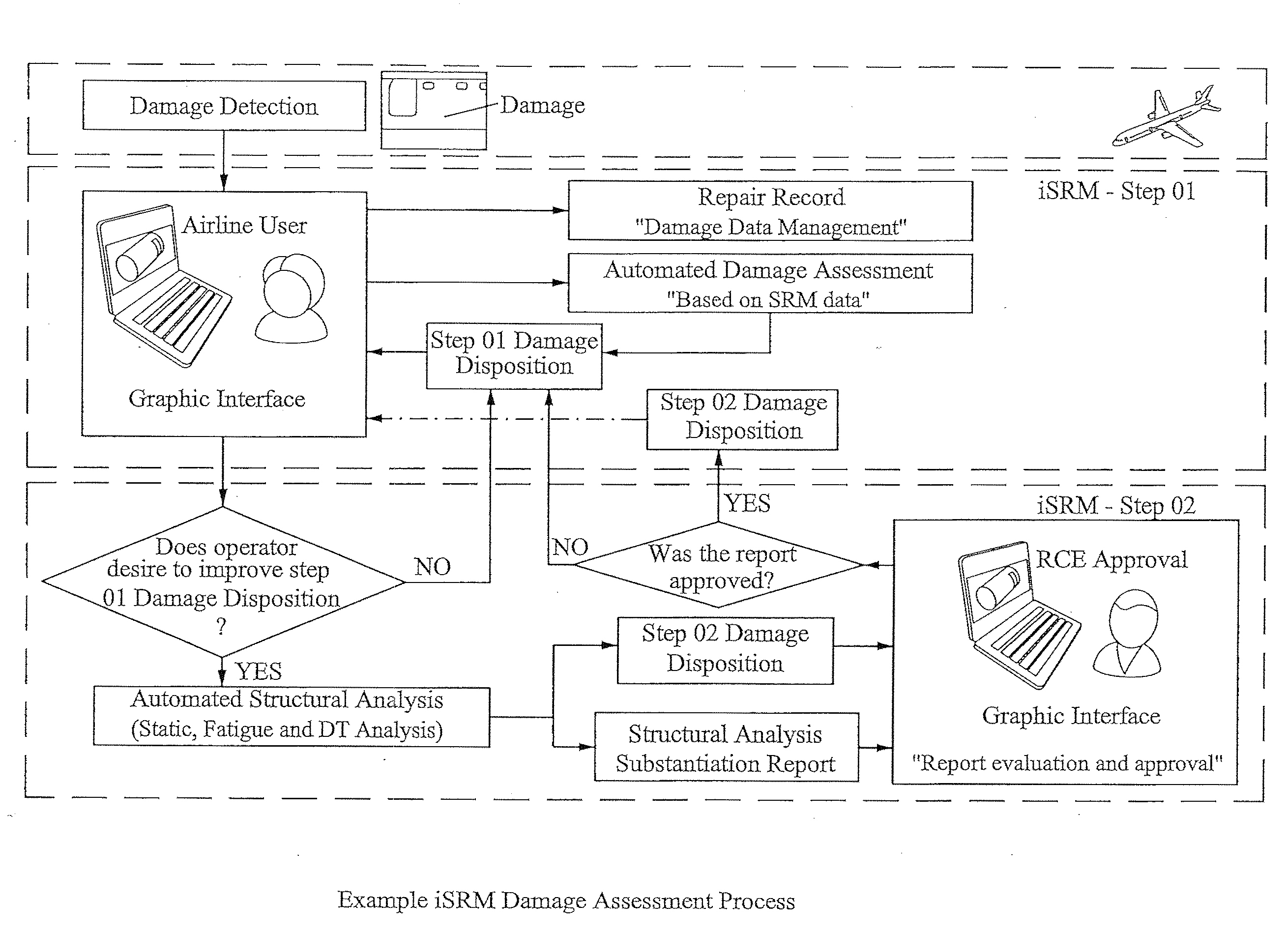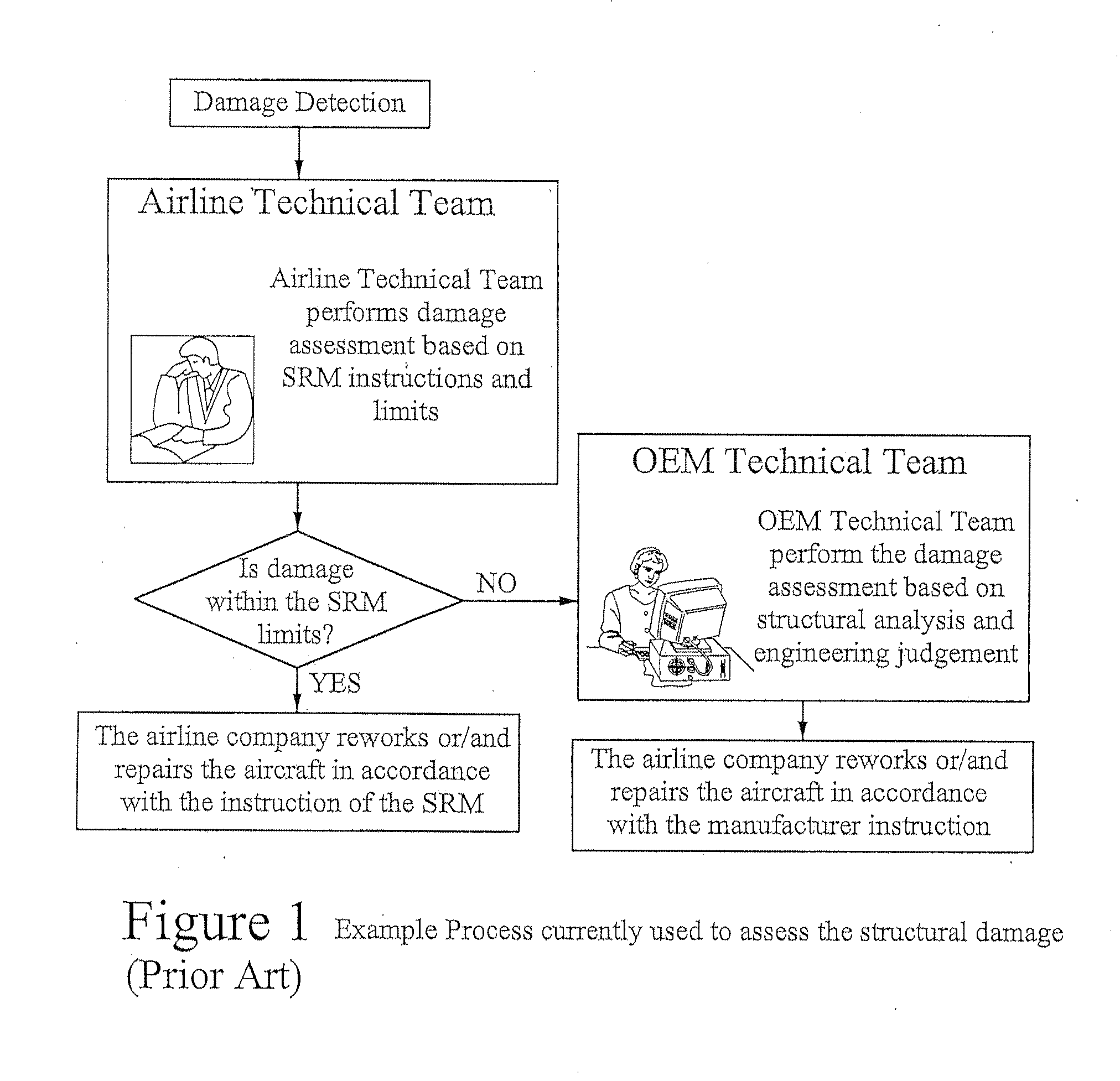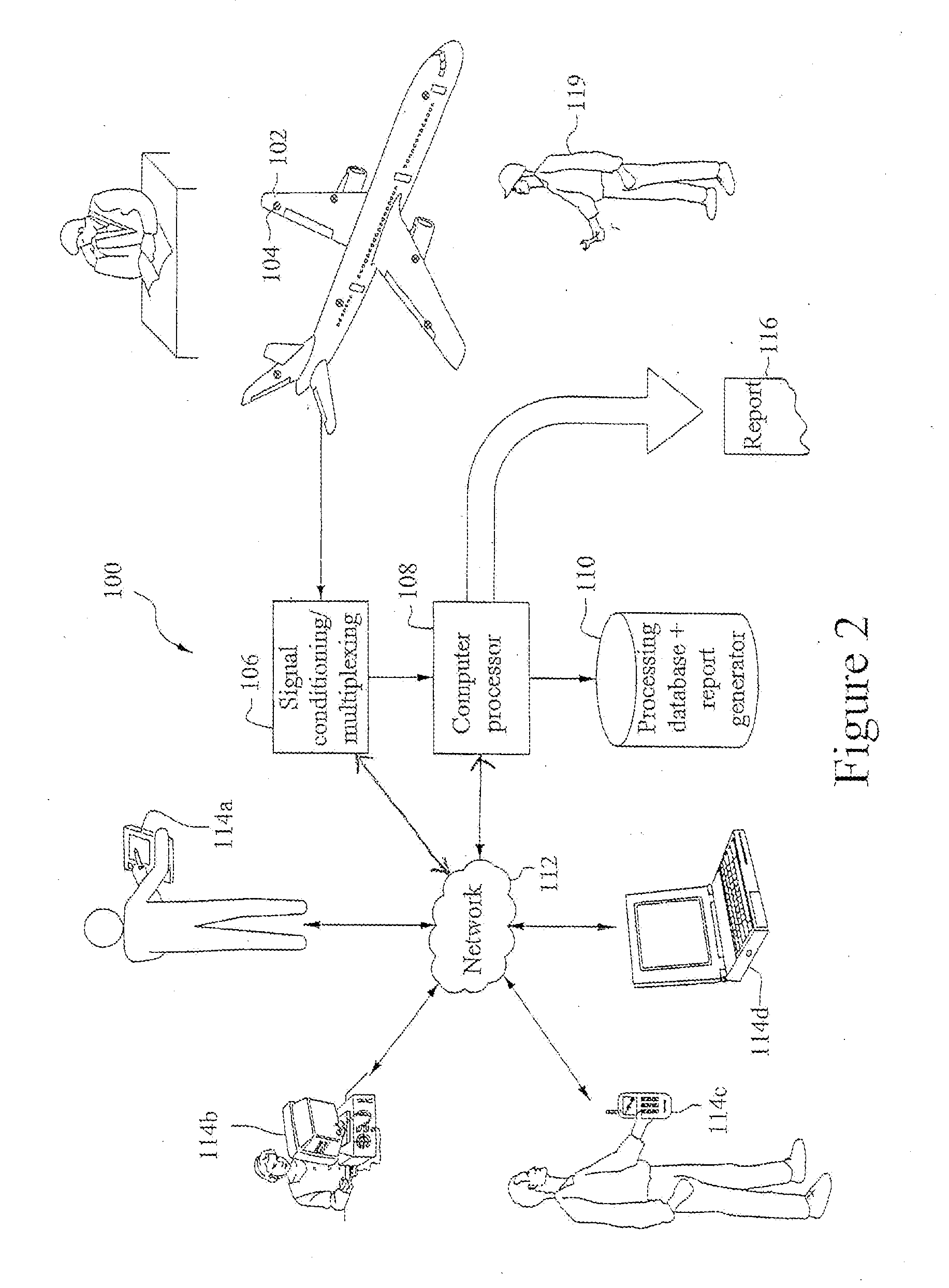System and method for remote and automatic assessment of structural damage and repair
a technology of automatic assessment and structural damage, applied in the field of system and method for remote and automatic assessment of structural damage and repair, can solve the problems of early detection of damage, damage severity, and aircraft in service are susceptible to corrosion, fatigue and accidental damage, and achieve the effects of ensuring the airworthiness and safe operation of aircraft, restoring structural integrity of aircraft, and reducing maintenance costs
- Summary
- Abstract
- Description
- Claims
- Application Information
AI Technical Summary
Benefits of technology
Problems solved by technology
Method used
Image
Examples
Embodiment Construction
[0031]FIG. 2 shows an example non-limiting iSRM damage assessment system 100. As shown in FIG. 2, an aircraft 102 can be equipped with or otherwise inspected by a variety of sensors 104 to automatically detect structural or other damage. The damage can also be detected other than by automatically. For instance, damage can be detected visually (walkaround inspection). In such case, damage information can be provided by the Airline Technical Team to iSRM manually, using the iSRM interface (e.g., via an input device 114). For example, in one example non-limiting implementation, sensors 104 provide signals of various forms including but not limited to electrical signals related to the structural condition to a signal conditioning / multiplexing device 106 that in turn provides sensed signals to a computer processor 108. Signal conditioning / multiplexing block 106 may also receive additional manual or other inputs via network 112, or such additional inputs can be provided directly to comput...
PUM
 Login to View More
Login to View More Abstract
Description
Claims
Application Information
 Login to View More
Login to View More - R&D
- Intellectual Property
- Life Sciences
- Materials
- Tech Scout
- Unparalleled Data Quality
- Higher Quality Content
- 60% Fewer Hallucinations
Browse by: Latest US Patents, China's latest patents, Technical Efficacy Thesaurus, Application Domain, Technology Topic, Popular Technical Reports.
© 2025 PatSnap. All rights reserved.Legal|Privacy policy|Modern Slavery Act Transparency Statement|Sitemap|About US| Contact US: help@patsnap.com



